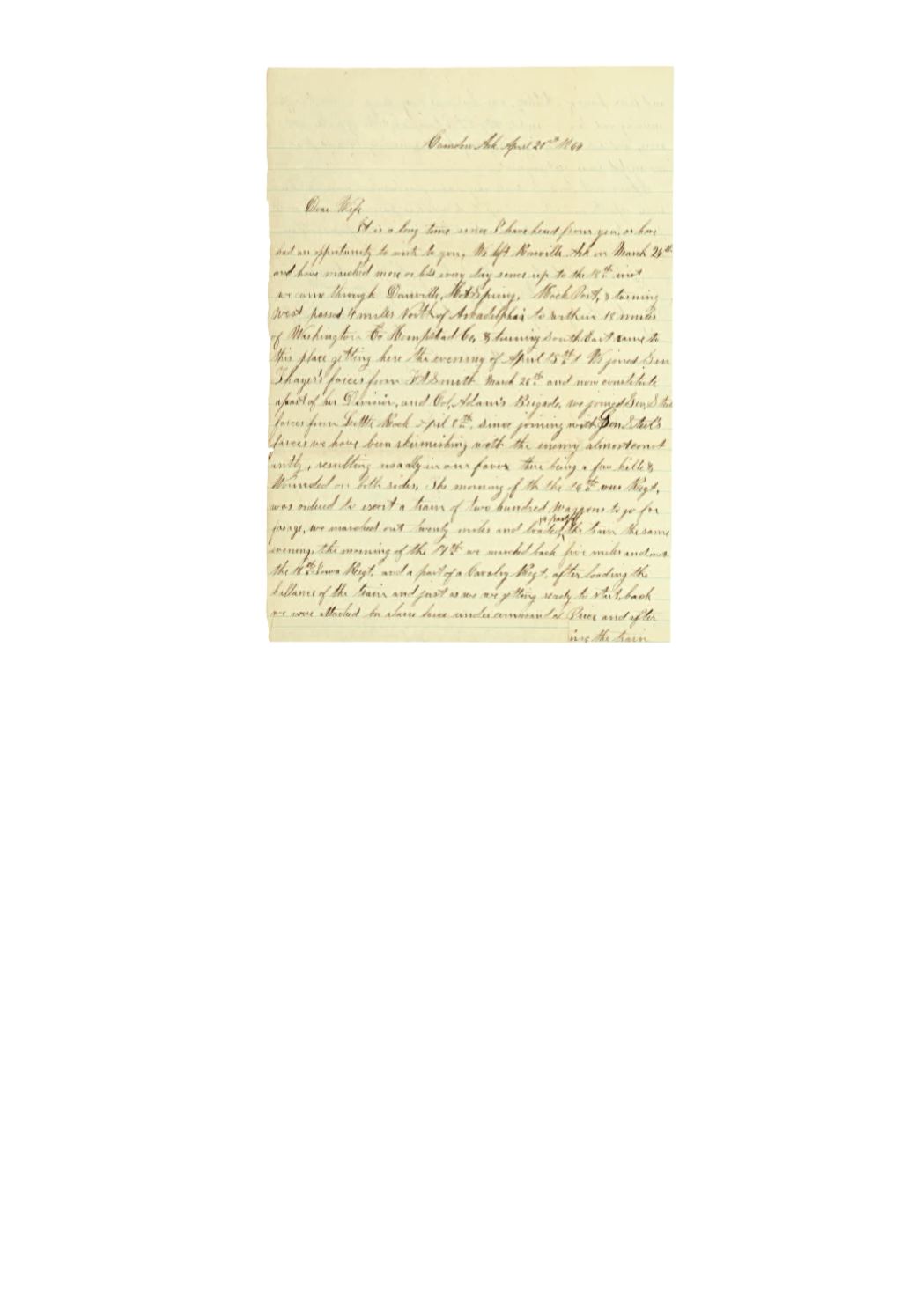

AN EXCELLENT COLLECTION OF LETTERS FROM A CAPTAIN OF THE FIRST KANSAS U
.
S
.
INFANTRY
,
THE FIRST BLACK TROOPS TO ENTER THE CIVIL WAR
,
WRITTEN TO HIS WIFE
.
The
First Kansas was an entirely colored regiment. Early in August of 1862, Senator James H. Lane of
Kansas authorized Captain James X. Williams of the 5th Kansas Infantry to recruit a regiment to
consist entirely of colored men. After a great deal of local opposition to the idea itself and equal
amounts of bureaucratic red tape; six companies of colored troops were mustered in for a term of three
years’ service at Fort Scott, January 13th, 1863—the date of Captain Grafton’s first letter. Four more
companies were raised by May 2nd. However, “on October 28th, 1862 a detachment of 225 recruits
for the Regiment, encamped near Butler were attacked by a force of several hundred men under
Colonel J. R. Cockrell. The enemy was defeated after a severe engagement, the loss 10 killed, and a
dozen wounded . . . this is claimed to be the first engagement of the war in which colored troops were
involved” (from The Union Army, Volume IV). In his first letter of January 13th, Grafton writes “I
was mustered into the U.S. Service at 2 o’clock this afternoon, as Captain with a full company. We
mustered five full companies and 60 men in another. We have enough deserters to fill the Regt.”
Grafton’s wife was apparently in great need of money and Grafton writes on July 15th “The
Regiment got paid off . . . for five months. My pay amounted to $710. I have sold my revolvers [ ! ]
so that I shall be enabled to send you eight hundred dollars. I will enclose it in an envelope and for-
ward it by the paymaster.” Things seem quiet for Grafton for a while, but from Camden Arkansas,
April 21st, Grafton writes that on the 17th they were under orders to accompany a train of 200 wag-
ons for forage to be loaded on a train. Just after doing so and ready to march back; they were attacked
by a large force with four pieces of artillery. “Our loss was very heavy. We have five officers missing
and two wounded. My 2nd Lieut. was shot through the arm and [of] my company killed and missing
15, and four wounded. I was not injured.”
Grafton made it through the war and was mustered out at Fort Leavenworth on November 2nd, 1865.
His last letters to his wife in Lawrence, KS are about starting life over. Grafton says that he has no idea
what he will do for a living, but has applied for a commission. He tells her to help out, he will engage a
colored woman who had been with the Regiment during the last days, to come and work for them.
L
OT
355,
continued









